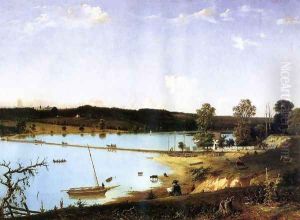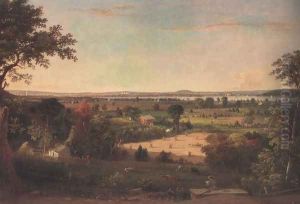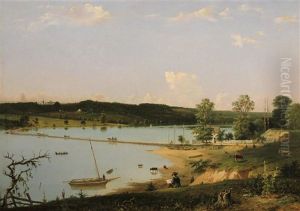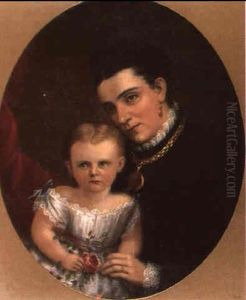William MacLeod Paintings
William MacLeod was a Scottish-born artist, primarily known for his contributions in the United States as a portrait painter, illustrator, and curator. Born in the Highlands of Scotland in 1811, MacLeod immigrated to the United States as a young man, where he would establish his career and make significant contributions to the American art scene of the 19th century.
MacLeod settled in the Washington, D.C. area, where he became an active figure in the local art community. He worked as a portraitist, capturing the likenesses of many notable figures of his time. His work was characterized by a keen attention to detail and a classic approach to portraiture, which was well-received in the context of the period's cultural and aesthetic standards.
In addition to his work as a portrait painter, MacLeod was also involved in the illustration of books and other publications. His illustrations were published in various materials, including Harper's Magazine, one of the most popular periodicals of the 19th century. These illustrations helped to disseminate his reputation beyond the realm of portraiture and allowed him to reach a wider audience.
MacLeod's contributions to the arts were not limited to his own production of art. He served as the curator of the Corcoran Gallery of Art in Washington, D.C., one of the first fine arts museums in the United States. In this role, he was responsible for overseeing the gallery's collection and exhibitions, contributing to the cultural life of the capital and the nation.
William MacLeod's impact on American art was multifaceted. Through his portraits, illustrations, and curatorial work, he helped to shape the visual culture of his adopted country. He passed away in 1892, leaving behind a legacy that would continue to be appreciated by art historians and enthusiasts. His works remain a testament to the artistic talent and cultural contributions of immigrant artists in America during the 19th century.



